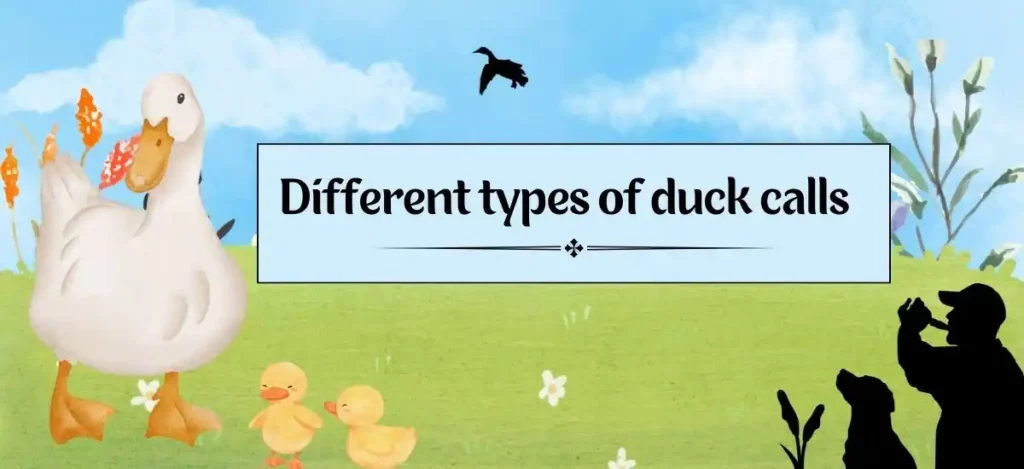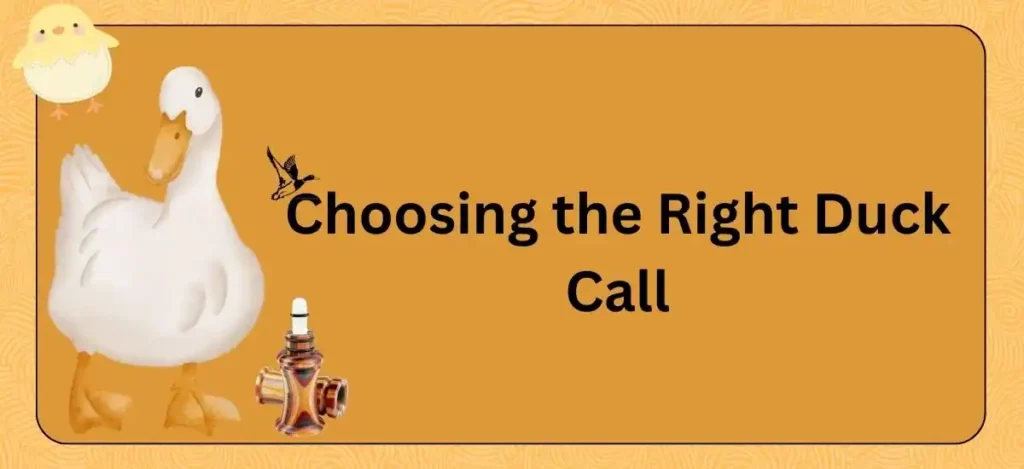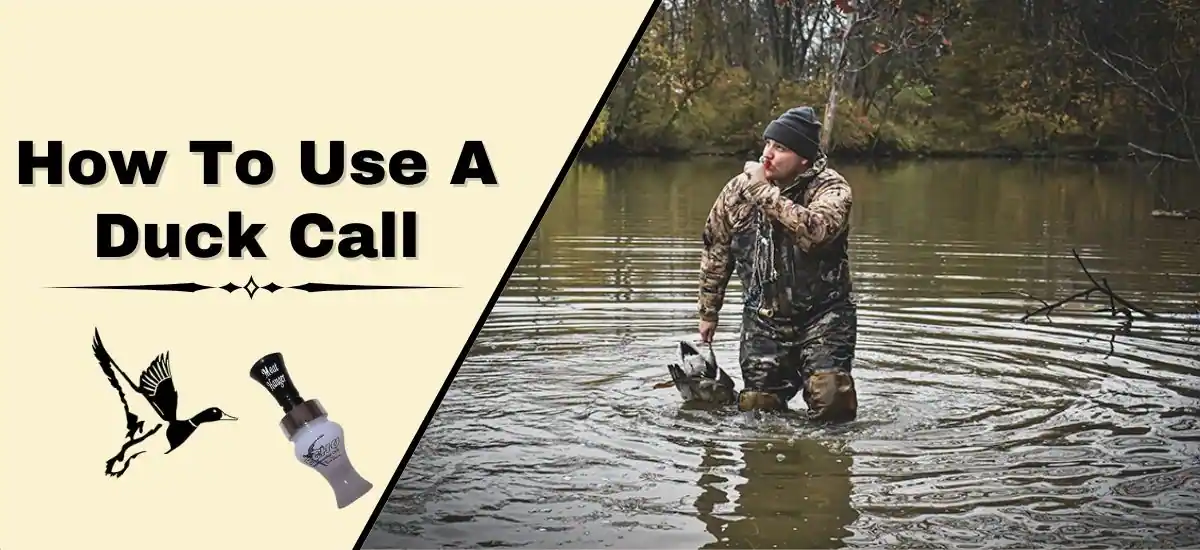Duck calling, an age-old art, is pivotal for those passionate about waterfowl hunting. Mastering this skill not only elevates the hunting experience but also bridges the communication gap between the hunter and the ducks.
This comprehensive guide delves deep into the nuances of duck calling, from understanding the foundational quack to the subtleties of volume control and the strategic use of different call types. Whether you’re a novice eager to learn or an experienced hunter seeking to refine your techniques, this guide offers invaluable insights.
By exploring the behavioral patterns of ducks, the significance of practice, and the broader context of duck hunting, we aim to provide a holistic perspective. Dive in to discover the secrets of effective duck calling and elevate your hunting game to new heights.
Basics of Duck Calling
Duck calling, while seemingly straightforward, is a craft steeped in tradition and technique. At its core lies the instrument that makes it all possible: the duck call.
What is a duck call?
A duck call is a specialized instrument designed to mimic the varied sounds and calls of ducks. Crafted to resonate with the natural calls of waterfowl, it serves as an essential tool for hunters, enabling them to attract and communicate with ducks. Its purpose is not just to replicate the sounds, but to do so in a manner that feels authentic to the ducks, luring them closer and creating opportunities for a successful hunt.
Different types of duck calls

Duck calls come in a myriad of designs, each tailored to specific needs and situations:
- Single-reed calls: Known for their versatility, single-reed calls produce a broader range of sounds. They require a bit more skill but offer the flexibility to adjust tones based on the situation.
- Double-reed calls: Ideal for beginners, these calls are easier to blow and produce a richer, mellower sound. They might not offer the range of a single-reed, but they’re consistent and user-friendly.
- Wooden calls: Crafted from various woods, these calls produce warm, mellow tones. They’re ideal for close-range calling due to their softer sounds.
- Acrylic calls: Durable and sharp, acrylic calls are louder and perfect for long-range calling. Their clear, piercing sound can reach distant flocks with ease.
- Polycarbonate calls: A more affordable option, these calls are durable and consistent, making them a favorite among many hunters.
Understanding the basics of duck calling is the first step in mastering this age-old craft. By familiarizing oneself with the tools of the trade, one can embark on a journey of continuous learning and refinement in the world of waterfowl hunting.
Related Post: Why Are Chihuahuas So Mean: Theory Debunked!
How Does a Duck Call Work?
Duck calls are intricate devices designed to mimic duck sounds, relying on design and sound principles.
Anatomy of a duck call:
- Barrel: Directs and amplifies sound.
- Insert: Contains the reed(s) and aids in sound production.
- Reed(s): Vibrates to produce sound when air is blown over.
- Tone board: Channels airflow and affects sound pitch.
- Wedge: Ensures correct reed vibration.
The science behind the sound
Blowing into the call makes the reeds vibrate, producing sound waves that resonate in the barrel. The resulting sound mimics duck calls, with pitch and tone adjustments made by altering airflow and hand positioning. Essentially, it’s a blend of airflow, vibration, and resonance to create the desired duck sounds.
Choosing the Right Duck Call

Selecting the ideal duck call is pivotal to a successful hunting experience. The market offers a plethora of options, and making an informed choice can significantly enhance your calling prowess.
Factors to consider
- Skill Level: Beginners might prefer double-reed calls for their ease, while experienced hunters might opt for the versatility of single-reed calls.
- Material: The choice between wood, acrylic, or polycarbonate affects the sound quality and durability. Wooden calls offer mellow tones, acrylics are sharp and clear, while polycarbonates are durable and budget-friendly.
- Hunting Environment: Consider where you’ll be hunting. For vast open areas, a louder call might be beneficial, while more subtle calls suit confined spaces.
- Species Targeted: Different duck species respond to varied calls. Ensure your call matches the species you’re targeting.
- Budget: While quality is paramount, it’s essential to find a call that offers the best value within your budget.
Top brands and recommendations
- Duck Commander: Renowned for their range and quality, suitable for both novices and pros.
- Primos Hunting: Offers a variety of calls, known for their durability and sound clarity.
- Zink Calls: High-end calls with impeccable craftsmanship and sound quality.
- Echo Calls: A favorite among many hunters for their versatility and range.
In essence, choosing the right duck call is a blend of personal preference, hunting needs, and budget. With the right research and understanding, you can find a call that elevates your hunting experience to unparalleled heights.
Related Post: Can Dogs Eat Applesauce Or Not?
Basic Techniques for Beginners
Embarking on the journey of duck calling requires a grasp of foundational techniques. For beginners, understanding these basics can pave the way for more advanced skills and a fruitful hunting experience.
Holding the duck call
- Grip: Hold the call between your thumb and index finger, ensuring a firm yet relaxed grip.
- Position: The barrel should face outward, away from the palm, allowing for easy airflow.
- Hand Shape: Create a chamber with your hands, which will aid in directing and modulating the sound.
Producing the basic quack:
- Breath Control: Use diaphragmatic breathing, pushing air from your diaphragm rather than just your lungs.
- Tongue Position: Place the tip of your tongue against the roof of your mouth and release it as you blow, producing a “T” or “K” sound.
- Sound Modulation: Think of saying “quack” or “aCK” into the call, focusing on the ending “CK” to get a sharp finish.
Volume control
- Soft Calls: For close-range or wary ducks, use gentle breaths to produce softer quacks.
- Loud Calls: Push more air through the call for distant ducks or in windy conditions.
- Hand Modulation: Adjusting the opening between your hands can also help control the volume and tone of the call.
Mastering these basic techniques lays a strong foundation for duck calling. With practice and patience, beginners can quickly evolve their skills, ensuring they communicate effectively with the waterfowl and enhance their hunting endeavors.
Advanced Techniques

As one progresses in the art of duck calling, delving into advanced techniques becomes essential. These nuanced calls, when mastered, can significantly elevate the hunting experience, allowing for more intricate communication with the waterfowl.
The feeding call
- Purpose: Simulates the sound of ducks feeding in the water, indicating safety and attracting others.
- Technique: Use a series of rapid, short notes. Think of the sound “tikkitukkatikka,” with emphasis on controlling the rhythm.
- Usage: Effective in calm waters or when ducks are seen feeding.
The hail call
- Purpose: Designed to get the attention of distant ducks and draw them closer.
- Technique: A series of loud, clear, and elongated quacks, decreasing in volume and frequency as they approach.
- Usage: Best used for ducks flying far away or high up.
The comeback call
- Purpose: Urges ducks that are moving away to reconsider and return.
- Technique: A series of 5-7 sharp, fast quacks, conveying urgency.
- Usage: When ducks seem disinterested or are flying away after an initial approach.
The lonesome hen
- Purpose: Mimics a single, lonesome hen looking for company, appealing to the duck’s social nature.
- Technique: Slow, spaced-out, and mournful quacks, with varied pitch.
- Usage: Effective in late mornings or afternoons when ducks are resting and can be lured by the promise of company.
Mastering these advanced techniques requires practice, observation, and understanding of duck behavior. When used aptly, they can transform a regular hunting session into a symphony of calls, resonating with the rhythms of nature and ensuring a successful hunt.
Knowing the Difference Between Call Types
| Call Type | Purpose & Understanding | Techniques & Usage |
| Greeting Call | Introduces your presence to distant ducks, signaling a welcoming environment. | Start with a series of 5-7 loud quacks, decreasing in volume as ducks approach. Ideal for ducks first spotted. |
| Comeback Call | Urges departing ducks to return, indicating they might have missed something enticing. | Deliver 5-7 sharp, fast quacks with a sense of urgency. Use when ducks are flying away after an initial interest. |
| Lonesome Hen | Mimics a solitary hen seeking company, capitalizing on the social nature of ducks. | Slow, mournful quacks spaced out with varied pitch. Effective during resting times when ducks seek companionship. |
| Pleading Call | A more desperate call, used to grab the attention of distant or uninterested ducks. | A series of elongated quacks with a pleading tone. Use when ducks seem disinterested or are at a considerable distance. |
| Hail Call | Designed for very distant ducks, this call is loud and clear, aiming to draw attention from afar. | Loud, clear, elongated quacks that decrease in volume and frequency as ducks get closer. Ideal for high-flying or far-off ducks. |
Understanding the nuances between different call types is pivotal for effective communication with ducks. Each call serves a unique purpose and, when used aptly, can significantly enhance the hunting experience.
Common Mistakes and How to Avoid Them

Even seasoned hunters can occasionally falter in their duck-calling techniques. Recognizing common pitfalls and understanding how to sidestep them is crucial for maintaining authenticity in your calls and ensuring a successful hunt.
Blowing too hard
- Mistake: Overexerting breath can produce a shrill, unnatural sound that can deter ducks rather than attract them.
- Solution: Focus on controlled, diaphragmatic breathing. Practice modulating your breath to produce varying volumes. Remember, it’s about quality, not sheer force.
Not varying calls
- Mistake: Using the same call repetitively can make you sound mechanical and less authentic to the ducks.
- Solution: Familiarize yourself with different call types and their appropriate situations. Adapt your calls based on the ducks’ behavior and response. Keep your calling dynamic and responsive.
Overcalling
- Mistake: Continuously calling, especially when ducks are approaching, can make you seem desperate and can spook the birds.
- Solution: Learn to read the situation. Once ducks show interest and are drawing nearer, reduce the frequency of your calls or cease altogether. Let their curiosity do the work.
By being aware of these common mistakes and actively working to avoid them, hunters can refine their duck calling techniques, ensuring they resonate more naturally with the waterfowl and enhancing the overall hunting experience.
The Role of the Natural Environment
The environment plays a pivotal role in duck hunting. Being attuned to nature’s cues can significantly enhance your success rate.
Wind Direction
- Ducks often land in the wind.
- Position yourself accordingly to approach ducks from a favorable angle.
- Adjust your calls based on wind strength; stronger winds may require louder calls.
Natural Cover
- Use the surroundings to camouflage yourself.
- Stay concealed in reeds, tall grasses, or blinds.
- Movement can spook ducks; natural cover helps mask unintentional shifts.
Understanding and adapting to the natural environment is key. It not only improves the authenticity of your presence but also increases the chances of a fruitful hunt.
Frequently Asked Questions
Q1. How Do I Clean And Maintain My Duck Call?
Ans: Regular cleaning ensures the longevity and optimal performance of your duck call. Remove the reed and tone board, and gently clean with warm water and mild soap. Dry thoroughly before reassembling.
Q2. How Often Should I Replace The Reeds In My Duck Call?
Ans: The lifespan of a reed varies based on usage. If you notice a change in sound quality or if the reed becomes damaged, it’s time for a replacement. Regularly inspecting and occasionally replacing reeds ensures consistent sound production.
Q3. Can I Use The Same Duck Call For Different Species Of Ducks?
Ans: While some calls are versatile, specific species have distinct calls. It’s beneficial to have specialized calls for targeted species, but a general call can work in mixed-species environments.
Q4. How Do Weather Conditions Affect Duck Calling?
Ans: Weather can influence duck behavior and the effectiveness of calls. For instance, on foggy days, calls might need to be louder, while on clear days, subtlety might be more effective. Adapting to weather conditions can enhance your calling success.
Q5. Are Electronic Duck Calls Effective?
Ans: Electronic calls can replicate various duck sounds and are especially useful for attracting large flocks. However, they might not be legal everywhere. Always check local regulations before using electronic calls.
Conclusion
In the intricate dance of waterfowl hunting, mastering the art of duck calling stands paramount. From understanding the mechanics of the call to adapting to the whispers of nature, every nuance plays a role in the hunt’s success.
Whether you’re a novice eager to learn the ropes or a seasoned hunter refining your craft, this guide offers a holistic journey into the world of duck calling. As you venture into the marshes, armed with knowledge and practice, remember that patience and observation are your allies. Embrace the symphony of calls, and may every hunt resonate with the rhythms of nature.
Related Post:
